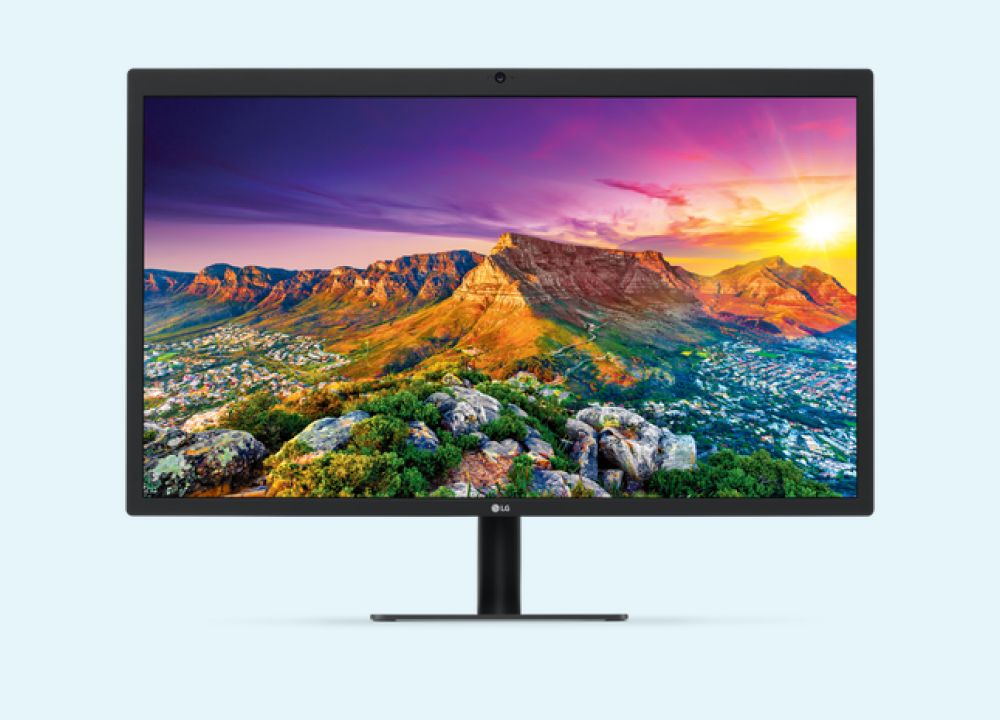
Shopping for a new TV can be challenging; with so many different models out there, it can be hard to know where to start. Some TV brand names are well-known, but that doesn’t necessarily mean they’re any good, because a TV’s performance changes with every model. Some budget-friendly TV brands are starting to make waves in the market and often release models that are better than more expensive options, so finding the best TV for your needs can get complicated. You can see a full list of models released in 2021 here.
From smart features to design, each brand has its own way of doing things. So how do they stack up? Keep reading to see our take on the best TV brands in the U.S. Also, see our recommendations for the best smart TVs, the best budget TVs, and the best 4k TVs
LG
LG is one of the most known electronic brands worldwide. After having started in South Korea in 1947, they’ve since expanded to a massive international conglomerate corporation specializing in a variety of consumer electronics. They’re known as an industry leader with TVs because one of their subset companies, LG Display – a different company than LG Electronics – is one of the largest display manufacturers. LG Display is the only supplier for OLED panels in TVs, and because of that, LG Electronics has a great selection of OLED displays, and they often cost less than the competition. OLEDs are unique because they don’t require a backlight and instead have self-lit pixels that can turn off individually, resulting in perfect black levels without any blooming, meaning they perform best in dark rooms.
LG’s 2021 lineup includes a few OLEDs, from the LG G1 OLED, which has a unique design meant to sit flush against the wall, to the basic LG A1 OLED, which doesn’t have any of the same gaming features the higher-end versions have. The LG C1 OLED offers the best value in price and features because it has all the gaming features people are looking for, like HDMI 2.1 bandwidth, a 120Hz panel, and VRR support. The main downside of OLEDs is their risk of permanent burn-in with prolonged exposure to the same static elements, but we don’t expect that to be an issue for people who watch varied content. If you’re worried about that, LG has an LED lineup, but their picture quality isn’t special because they have IPS panels with a low contrast ratio.
Samsung
Samsung is a South Korean electronics company that makes products for consumers worldwide. Besides their TVs, you’ve likely seen or even owned one of their fridges, phones, or monitors. Founded in 1938, Samsung originally was a trading company for food and grocery products, and they started making electronics only in the 1960s. Since then, they’ve grown into a world leader with consumer electronics, and their TVs are often pioneers when it comes to new technology. Samsung’s TVs are mainly known for the quantum dot technology, labeled as QLED, which they came up with to compete with LG’s OLED lineup. However, QLEDs are very different than OLEDs because they use a traditional LCD panel backlit by LED lighting, and there’s a filter in between to help improve the array of colors the TV can display.
Samsung has a fairly diversified lineup in 2021 with entry-level to 8k models. It’s the first year with their new Mini LED technology, which they label as Neo QLED. These TVs, like the Samsung QN90A QLED, are meant to get brighter than past QLEDs and offer better control over their local dimming feature. Unfortunately, the main downside to their 2021 lineup of TVs is that some models like the Samsung QN85A QLED and the Samsung Q80/Q80A QLED have IPS-like panels with low contrast, so blacks look gray if you don’t enable the local dimming feature. Even if you do, there’s blooming around bright objects on these models. Samsung uses their own smart system with their TVs, called Tizen OS, which has a user-friendly interface, feels smooth, and has a ton of apps you can download.
-
Sony
-
Along with LG and Samsung, Sony is part of the big three TV brands in sales. They started in Japan in 1946, first making audio recorders, before changing their name to Sony in 1958 and entering the TV market not long after. Sony came out with the first LED-backlit LCD TVs at the start of the 21st century, and they continue making high-end LED TVs in 2021, but they also make OLEDs. Their LED models are better than LG’s because they mostly use VA panels with high contrast, and they tend to get bright, so they perform well both in bright and dark rooms. Unlike LG and Samsung, Sony doesn’t have a proprietary smart platform, but instead, they use Google TV, which is great if you already have a Google ecosystem at home, and you can connect your smart TV with your smart speaker.
Sony TVs are well-known and appreciated for their image processing, as the Sony A90J OLED is one of the best TVs for watching movies that we’ve tested, and Sony TVs also usually have fantastic out-of-the-box accuracy, so you usually won’t have to worry about getting it calibrated. They typically deliver the best upscaling and motion processing, making Sony TVs a safe choice if you plan on watching older content and care about image fidelity. On the other hand, Sony has been a bit slow to adopt new technologies, especially when it comes to gaming features. Most of their TVs still don’t support common features like variable refresh rate technology (VRR) or automatic low latency mode (ALLM). Sony has started rolling out firmware updates to add new features to their 2020 and 2021 models, including VRR support, but they’re still a few years behind most other TV manufacturers.
Vizio
Vizio is an American TV brand based out of California, and their TVs are only available in the United States. Unlike the other brands in this list, Vizio doesn’t have a very diversified product range, as they mainly focus their efforts on entertainment electronics, like TVs and soundbars. Their TVs also tend to cost a bit cheaper than the high-end models from Samsung and Sony. They’re known to deliver deep blacks for a great dark room performance as most of them have VA panels, and the higher-end models have at least decent local dimming with minimal blooming around bright objects. Their higher-end models also get bright, so visibility isn’t an issue in most well-lit rooms, and highlights pop in HDR.
Unfortunately, one of Vizio’s biggest downsides is the smart interface. Unlike almost every other TV on the market, Vizio’s interface doesn’t have a built-in app store, and there’s no way for you to add new apps. The most popular apps are available, though, and their TVs all support casting from your mobile device. Recently, there have also been numerous problematic firmware updates, with issues ranging from certain features no longer working to TVs not powering on after updating the firmware. Vizio has promised to fix these issues, but many are still present. If you only watch lower-resolution content, then Vizio is one of the few brands that still make 720p and 1080p TVs, like the Vizio D3 Series 2021. The rest of their lineup includes the high-end P Series and P Series Quantum, mid-range M Series, and the 4k entry-level V Series. In addition to their LED models, they also have one OLED model released in 2020, and you can still find it available in 2021.
-
TCL
TCL originated in China in the 1980s by manufacturing cassettes, and they’ve since grown into an international electronics company that makes stuff from phones to air conditioners to soundbars. Along with Vizio and Hisense, they mainly make more budget-friendly models, but they do have high-end TVs to compete with the bigger brands. Their TVs often provide good value for their price, and the high-end TCL 6 Series/R646 2021 QLED has features that you find on more expensive options, like variable refresh rate support and HDMI 2.1 inputs, which is great if you’re looking for a value-friendly gaming TV. They have a unique lineup in 2021 that features new Google TVs, like the TCL 5 Series/S546 2021 QLED, but the 2020 models like the TCL 5 Series/S535 2020 QLED are still available because they have Roku TV, so unlike most other brands, you can choose which smart platform you prefer.
While TCL TVs usually have VA panels with high contrast, the one big area where TCL is behind compared to other brands is with the local dimming. Even on their Mini LED TVs like the TCL R646, the local dimming is just decent, and it improves the contrast with our checkerboard test pattern, but it doesn’t do much to improve the picture quality in dark scenes. As TCL is a main competitor of Hisense, this is where TCL loses out, so if you care about local dimming, a Hisense TV might be the better choice for you. The 2021 models also have trouble properly upscaling 480p content, but this isn’t a problem if you only watch 1080p or 4k content.
Hisense
Hisense is a growing company in the TV industry. Originating from China, they’ve only been selling TVs in North America for a handful of years, and they’re known as a budget-friendly company, so their main competition is TCL, although Hisense is starting to pull away from TCL in terms of their TVs’ overall performance. Hisense has a relatively small TV lineup, but they all offer great value for their price, and they’re better than the competition in terms of value. The Hisense U9DG is their 2021 flagship 4k model, and it’s a very unique TV. It combines two LCD panels – one grayscale and one full color – to achieve much higher contrast and better local dimming than most LED LCD TVs are capable of.
This unique design has a few issues, though, as it has a slow response time, resulting in blurry motion that will likely disappoint most gamers. It also has abnormally high input lag, although it’s still good enough for casual gamers. The mid-range 4k Hisense models, including the Hisense U8G and Hisense U7G, have a great selection of gaming features, including HDMI 2.1 support and variable refresh rate technology support. However, they also suffer from some strange motion issues. In terms of picture quality, most Hisense TVs perform well, with high contrast ratios that look great in dark rooms and high peak brightness. Most of their 4k models use quantum dot technology, ensuring they can display a wide range of colors with the latest HDR content. Unfortunately, Hisense has also caused quite a bit of confusion in 2021, as many of their 75″ models are available in both VA and IPS variants, with no easy way to determine which one you’ll get.









